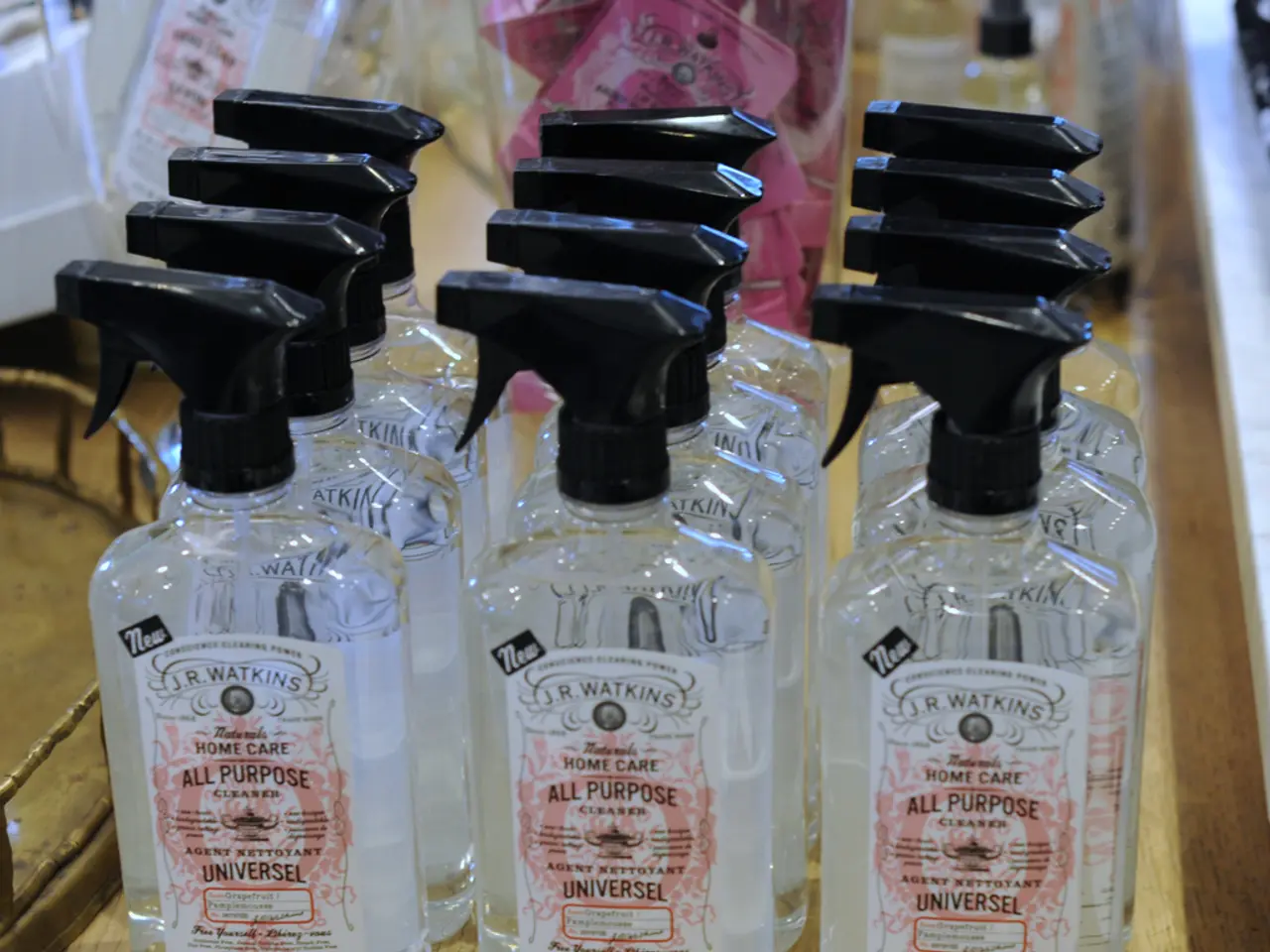Guidelines for Applying Pesticides against Soybean Fungus
In the agricultural world, a growing concern is the northward movement of soybean rust, a disease that is expected to affect more areas, including Ohio in the near future. To combat this, it's crucial to understand the best methods for applying soybean rust fungicides effectively.
The most suitable equipment for this task is a ground boom sprayer fitted with hollow cone nozzles, operating at 60 psi or higher, applying a minimum of 10 gallons per acre, and producing fine to medium droplets (approximately 106 to 340 microns). This setup ensures good canopy penetration, even leaf coverage, and minimizes drift.
High-clearance or tractor-mounted ground sprayers are preferred, especially for wide-row soybeans, as they cause less damage to the crop. The key is to use the highest practical spray volume, with at least 10 gallons per acre recommended for chemical delivery and canopy coverage.
When it comes to nozzle selection, hollow cone nozzles facilitate good penetration through the soybean canopy and distribute fungicide evenly. It's essential to maintain at least 60 psi for adequate atomization and canopy penetration.
The choice of nozzle type and size will depend on the application rate you choose, and the ability of your sprayer components, especially the pump, to provide the desired spray quality at the travel speed and spray pressure you want to operate the sprayer. Fine to Medium spray quality (approximately 200-300 micron in size) is recommended by nozzle manufacturers for application of fungicides for soybean rust.
Proper operation of an air-assisted sprayer is important for taking full advantage of the air assistance. Directed spraying, which covers the plant with more than one nozzle from different angles, can improve coverage on the soybean canopy, but may not be practical for soybeans planted in narrow rows.
It's important to note that achieving the best coverage of soybean leaves can be challenging due to the need for both horizontal and vertical distribution of the fungicide. To achieve this, slower speeds are often beneficial.
Fungicides manufactured to control soybean rust are effective, but their success depends on proper application before the disease is detected. Researchers predict that soybean varieties with high resistance to soybean rust may not be available for another five years.
In summary, the single most important factor affecting the control of soybean rust is getting a thorough coverage of soybeans with the fungicide. By following these guidelines and choosing the right equipment and nozzles, farmers can significantly increase their chances of successfully combating soybean rust.
- In the realm of science and agriculture, understanding environmental factors and employing the right tools, such as ground boom sprayers with hollow cone nozzles, becomes essential to combat expanding diseases like soybean rust.
- Proper maintenance of spray pressure (at least 60 psi) and applying a suitable volume (minimum 10 gallons per acre) are crucial aspects of the application process, ensuring effective canopy penetration and leaf coverage.
- Beyond agriculture, this scenario highlights the importance of technology in solving real-life challenges, in this case, by improvingS spraying equipment for health-and-wellness reasons, specifically the control of medical-conditions like soybean rust.
- Meanwhile, in the field of education-and-self-development, farmers can educate themselves about the best practices for soybean rust fungicide application, such as nozzle selection (hollow cone nozzles), travel speed considerations, and canopy distribution techniques (directed spraying and slower speeds).
- Following this example, the broader society can learn valuable lessons about the interconnections between various fields, like science, finance, lifestyle, general-news, and sports, and the need for collaboration to address global challenges like soybean rust efficiently.




